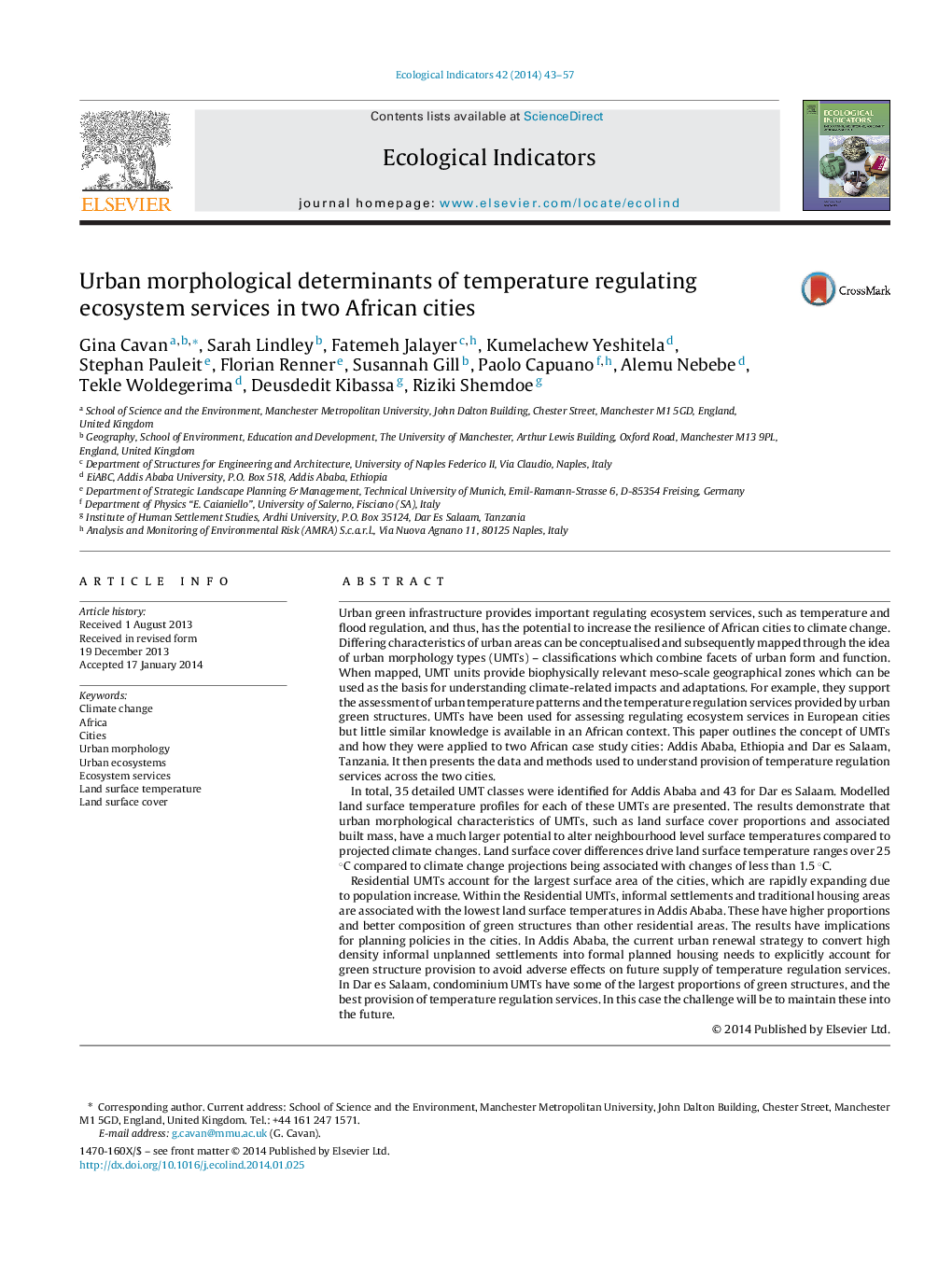| کد مقاله | کد نشریه | سال انتشار | مقاله انگلیسی | نسخه تمام متن |
|---|---|---|---|---|
| 4373142 | 1617159 | 2014 | 15 صفحه PDF | دانلود رایگان |
• Urban morphology types provide a useful framework for ecosystem services assessment.
• Residential urban morphology types cover the greatest surface area in both cities.
• Temperature regulating services were modelled using the free web-based STAR tools.
• Urban morphological change could affect temperatures much more than climate change.
• Urban renewal to upgrade informal settlements affects ecosystem services provision.
Urban green infrastructure provides important regulating ecosystem services, such as temperature and flood regulation, and thus, has the potential to increase the resilience of African cities to climate change. Differing characteristics of urban areas can be conceptualised and subsequently mapped through the idea of urban morphology types (UMTs) – classifications which combine facets of urban form and function. When mapped, UMT units provide biophysically relevant meso-scale geographical zones which can be used as the basis for understanding climate-related impacts and adaptations. For example, they support the assessment of urban temperature patterns and the temperature regulation services provided by urban green structures. UMTs have been used for assessing regulating ecosystem services in European cities but little similar knowledge is available in an African context. This paper outlines the concept of UMTs and how they were applied to two African case study cities: Addis Ababa, Ethiopia and Dar es Salaam, Tanzania. It then presents the data and methods used to understand provision of temperature regulation services across the two cities.In total, 35 detailed UMT classes were identified for Addis Ababa and 43 for Dar es Salaam. Modelled land surface temperature profiles for each of these UMTs are presented. The results demonstrate that urban morphological characteristics of UMTs, such as land surface cover proportions and associated built mass, have a much larger potential to alter neighbourhood level surface temperatures compared to projected climate changes. Land surface cover differences drive land surface temperature ranges over 25 ̊C compared to climate change projections being associated with changes of less than 1.5 ̊C.Residential UMTs account for the largest surface area of the cities, which are rapidly expanding due to population increase. Within the Residential UMTs, informal settlements and traditional housing areas are associated with the lowest land surface temperatures in Addis Ababa. These have higher proportions and better composition of green structures than other residential areas. The results have implications for planning policies in the cities. In Addis Ababa, the current urban renewal strategy to convert high density informal unplanned settlements into formal planned housing needs to explicitly account for green structure provision to avoid adverse effects on future supply of temperature regulation services. In Dar es Salaam, condominium UMTs have some of the largest proportions of green structures, and the best provision of temperature regulation services. In this case the challenge will be to maintain these into the future.
Journal: Ecological Indicators - Volume 42, July 2014, Pages 43–57
